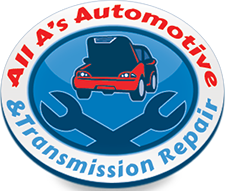Tire Rotation: What Are The Facts and Benefits?

 Sometimes, it can be hard to determine which automotive-care tasks are required and which ones are not. The fact is, as car manufacturers continue to make mechanical and technological advancements in their designs, some tried-and-true car repairs are a thing of the past. Today’s tires are safer, longer lasting, and provide more advantages than tires did several decades ago. However, tire rotations are still a maintenance task you need to schedule regularly. Highly trained technicians can identify tread wear patterns and air pressure issues and help you get more tire life during a tire rotation service. Let’s explore the reasons why.
Sometimes, it can be hard to determine which automotive-care tasks are required and which ones are not. The fact is, as car manufacturers continue to make mechanical and technological advancements in their designs, some tried-and-true car repairs are a thing of the past. Today’s tires are safer, longer lasting, and provide more advantages than tires did several decades ago. However, tire rotations are still a maintenance task you need to schedule regularly. Highly trained technicians can identify tread wear patterns and air pressure issues and help you get more tire life during a tire rotation service. Let’s explore the reasons why.
What Is Tire Rotation?
Tire rotation involves moving the tire’s position to ensure even tread wear. To understand the importance of tire rotation, consider the car’s weight distribution, powertrain, and road conditions. When driving, the wheels connected to the powertrain and supporting heavy components wear more quickly due to the pressure and forces exerted on them. Auto manufacturers recommend this services for every car, with few exceptions. One example is certain high-performance vehicles with different-sized tires on the front and back.
Tire Rotation Types
A rotation service involves moving your vehicle’s tires to a different side of the car (left to right), a different position (front to rear), or both. The vehicle model and tire type determine whether the tires move from front to back, side to side, or in a diagonal rotation pattern. Directional tires require extra care since their rotation pattern is limited to the same side of the vehicle.
Forward-Cross Rotation
Rear-wheel-drive vehicles often use the forward-cross rotation pattern. This configuration moves the driver-side front tire to the driver-side back position, and the passenger-side front tire moves to the passenger-side back position. The previous rear-position tires go to the opposite side front-position.
Rearward-Cross Rotation
Front-wheel-drive and AWD vehicles often use the rearward-cross rotation pattern. This configuration moves the driver-side back tire to the driver-side front position, and the passenger-side back tire moves to the passenger-side front position. The previous front-position tires go to the opposite side rear-position.
X-Cross or Crisscross Pattern Rotation
The X-cross pattern is a very common rotation method ideal for front-wheel-drive and AWD vehicles. This configuration crisscrosses each tire to the opposite side and position; the driver-side front tire swaps with the passenger-side rear tire, and the passenger-side front tire swaps with the driver-side rear tire.
Benefits of Tire Rotation
Tires are one of your vehicle’s most critical safety features since they are the only components in contact with the road. Regular tire rotation services help extend tire life and facilitate even tread wear on all your vehicle’s tires. Some front-wheel-drive cars will experience more tread wear on the front tires than on the rear tires. This tread wear is due to the extra weight on the front axle and the extra forces involved in acceleration, braking, and steering. Routine tire rotation moves those worn front tires to the car’s rear, equalizing the tread wear across all four tires and extending tire life. Additional benefits of tire rotation service can include:
- Better Gas Mileage
- Improved Vehicle Performance
- Longer Tire Life
- Proper Tire Air Pressure
- Reduction of Uneven Tread Wear
- Smoother More Comfortable Ride
Why Should I Invest In Tire Rotation?
Routine tire maintenance is essential to maintaining your vehicle’s performance and safety. Adhering to the manufacturer’s tire rotation recommendations helps even out tread wear and extend the life of your tires. It also provides the perfect opportunity to ensure all four wheels are in good working order with adequate air pressure. Well-maintained tires are a wise investment that helps keep you safe and can save you money by maximizing the lifespan of your vehicle’s tires.
Identify Common Tire Problems
During a tire rotation service, the technician will inspect the condition of your tires and rims. Road debris, potholes, and age can affect the condition and safety of your wheels. Sometimes, the damage may be on the inboard side of the rim or tire, where you can’t easily see it. Other common tire problems can include:
- Damaged wheel/rim
- Incorrect air pressure
- Leaking valve stem
- Sidewall blistering
- Slow leak due to a foreign object
- Tread cupping
- Uneven tread wear
Suggested Tire Rotation Intervals
Consult your owner’s manual for tire rotation intervals. In general, auto experts recommend scheduling a tire rotation service every 3,000 – 6,000 miles or with every oil change. If you don’t drive often, schedule your tire rotation every six months.
Rotation Service in Midland, MI
We offer complete automotive service for foreign and domestic automobiles, from tune-ups and repairs to tire rotations and alignments. The service technicians at All A’s Automotive & Transmission Repair will check your vehicle’s tires for uneven tread wear, incorrect air pressure, and perform the correct tire rotation type for your needs.
Schedule Your Tire Appointment
To reap the benefits of a tire rotation and help prolong your vehicle’s tire life, call All A’s Automotive at (989)631-4672 or visit us online to schedule an appointment today!
Posted in: Tires & Wheels
Leave a Comment (0) ↓
